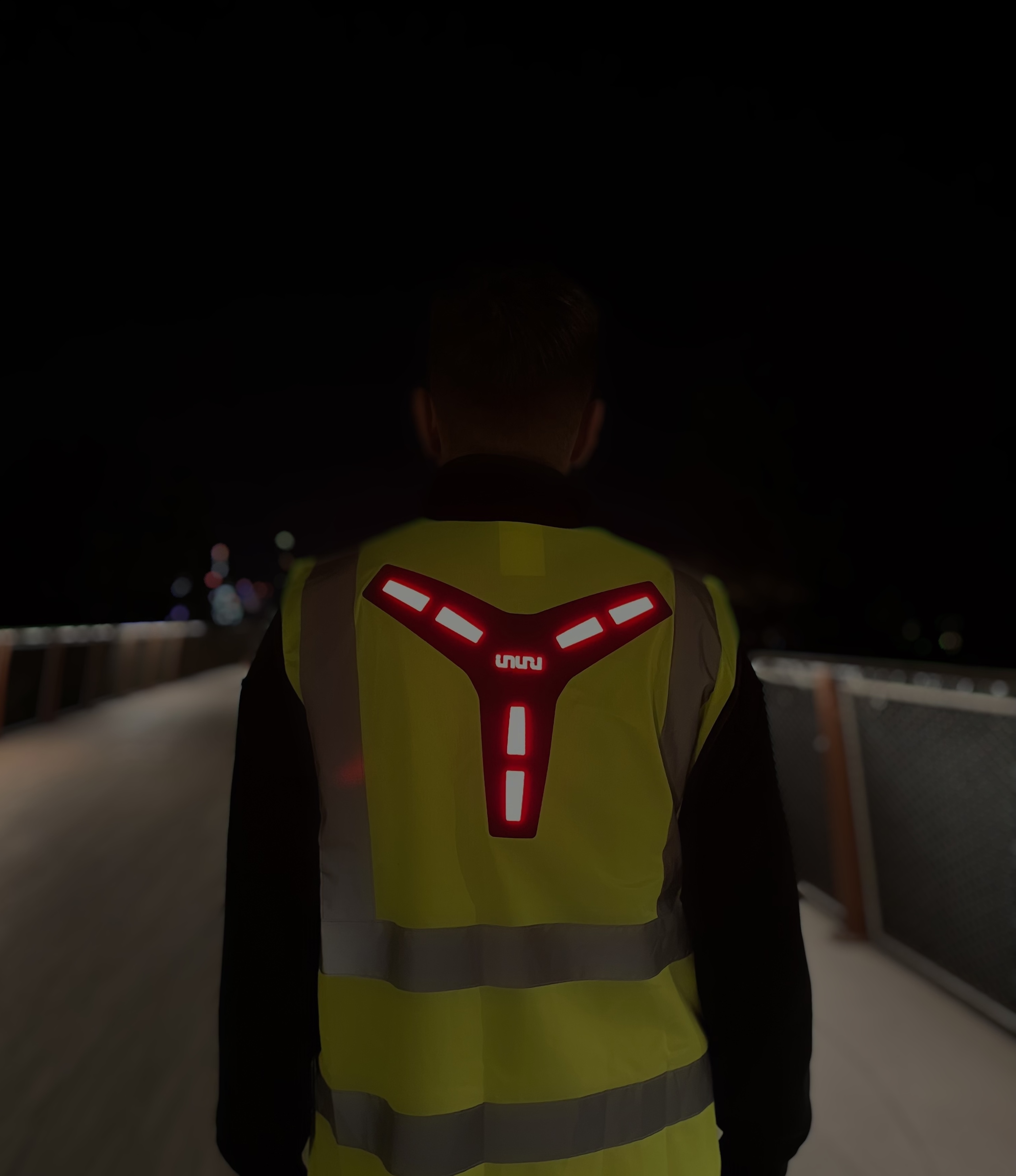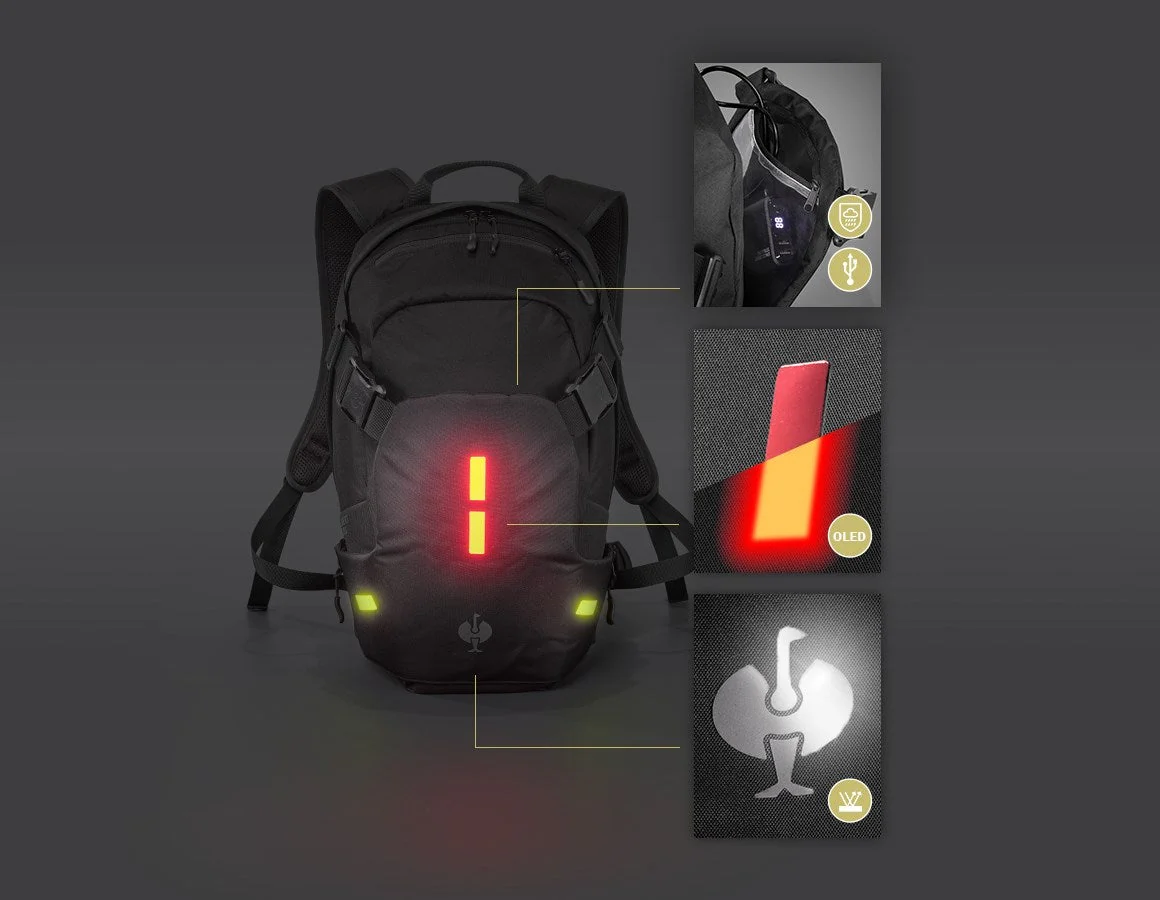Safety wearables are smart clothing or devices designed to improve personal safety by increasing visibility, monitoring hazards, and reducing risks in dangerous environments. Examples include smart helmets, wristbands that track fatigue, and safety vests with embedded lighting. Unlike traditional hi-vis reflective gear, advanced safety wearables incorporate active technologies—such as OLED panels—that emit their own light, enhancing visibility in both daylight and total darkness. They combine visibility, hazard detection, and connectivity to prevent accidents and save lives.

Workplace accidents remain a major concern across industries, particularly in construction, roadwork, logistics, and mining. Every year, thousands of incidents occur because workers were not seen in time. According to the European Agency for Safety and Health at Work, poor visibility is a contributing factor in up to 15–20% of all fatal accidents in construction and road maintenance zones. In the U.S., the Bureau of Labor Statistics reported that over 800 workers died from transportation-related incidents in 2022 alone, many in low-light or high-traffic areas.
The issue is clear: reflective strips only function when struck by headlights or lamps. In dimly lit worksites, underground tunnels, or unlit rural roads, this passive approach fails. Employers are seeking OLED safety vests and LED safety wearables with active illumination to overcome this dangerous gap and cut down on workplace accidents.
Modern safety wearables combine multiple protective features:
1. Enhanced Visibility – Self-illuminating jackets integrate OLED or LED lighting, keeping workers visible in real time.
2. Hazard Detection – Built-in sensors monitor gas leaks, temperature extremes, or unsafe fatigue levels.
3.Connectivity – Many wearables connect via Bluetooth, NFC, or IoT networks, sending alerts to supervisors instantly.
4. Compliance – Products are increasingly engineered to meet EN ISO 20471 (high-visibility clothing) and IEC 62368 (low-voltage electronic safety) standards.
These safety wearables are especially critical for industries where visibility and accident prevention are essential.
Reflective vests have long been the default for safety. But they rely completely on external light, which makes them ineffective in complete darkness. Inuru introduces ultra-thin, flexible OLED panels into fabrics, actively emitting light without external triggers.
Unlike LEDs, OLEDs emit soft, uniform surface light that avoids glare but is highly recognizable from all angles. They are lightweight, washable, and thin, meaning they can be seamlessly integrated into jackets, vests, or uniforms without adding discomfort. This makes OLED safety vests not only more effective but also more comfortable for daily use in workplaces prone to accidents.
Traditional high-visibility clothing works only when illuminated. In total darkness—like tunnels, remote worksites, or power outages—workers wearing reflective vests may go unseen. This is a key cause of nighttime accidents and collisions.
By contrast, OLED safety wearables generate their own light. Research on lighted work-zone apparel found that illuminated vests are visible from up to 150 meters away, compared to just 25–40 meters for reflective-only gear. At 50 km/h, this gives drivers nearly two additional seconds to react—a critical margin that can prevent workplace accidents and fatalities.
Real-world safety reports show that employers adopting illuminated safety gear recorded 30–40% fewer near-miss incidents, proving the effectiveness of active-lighting solutions like OLED vests and LED safety wearables.
LED Research
1. Virginia Tech Transportation Institute (VTTI): Driving trials proved LED-lit safety vests significantly increase detection distances over standard retroreflective gear.
2. Iowa State InTrans: Tests of LED self-illuminating vests confirmed superior visibility, particularly at 10–30° off-axis, where reflective tape fails.
OLED Research

1. European Transport Safety Council (2023): 75% of pedestrian accidents occur in low-visibility settings.
2. Finnish Road Safety Study (2021): Reflective vests reduce risk by ~37% in darkness, but require external light.
3. Simulation Studies (2023): OLED safety vests add ~200 ms driver recognition time, equating to 5–10 m extra stopping distance.
4. Employer Reports (2022): Companies using active-light gear saw up to 40% fewer near misses and accidents than those using reflective-only solutions.
1. Construction & Roadwork – High visibility in tunnels, highways, or night projects using OLED vests.
2. Cyclists & Pedestrians – Safer commuting in poorly lit cities with OLED visibility wearables and LED gear.
3. First Responders – Firefighters, police, and medics more visible in emergencies with OLED safety vests.
4. Industrial & Mining – OLEDs enable safety underground or in dim facilities, preventing workplace accidents.
5. Military & Defense – Dual-mode lighting: high-visibility for safety, adaptive low-light for tactical use.
The launch of Inuru’s Dragon Factory in Berlin lowered OLED production costs by ~90%, making large-scale adoption feasible. As regulatory certifications advance, OLED-integrated apparel is positioned to become a new global safety standard.
Beyond the workplace, OLEDs have applications in sportswear, children’s apparel, and urban commuting, where visibility saves lives. For accident prevention and enhanced visibility, OLED safety wearables and LED safety vests will soon be indispensable.
Safety wearables are smart clothing and devices that enhance protection by boosting visibility and reducing workplace accidents. Unlike reflective gear, OLED safety vests actively emit light, making workers visible even in total darkness. Compared to LEDs, OLEDs provide uniform illumination, wider visibility angles, and textile comfort—positioning them as the future of personal safety gear.
SOURCES:
(1)https://jetblacksafety.com/blog/post/36-the-united-colour-of-health-and-safety-worldwide.html
(2)https://unece.org/sites/default/files/2025-04/GRE-92-05e.pdf
(4)https://www.sciencedirect.com/science/article/abs/pii/S0925753521001028
(5)https://optics.org/news/10/2/26
(6)https://www.mdpi.com/2072-666X/12/6/652
(7)https://www.inuru.com/news/engelbert-strauss-introduces-backpack-with-inuru-oled-technology
(9)https://vtrc.virginia.gov/media/vtrc/vtrc-pdf/vtrc-pdf/18-R3.pdf
(10)https://www.fep.fraunhofer.de/en/press_media/Pressemitteilungen2019/04_2019.html